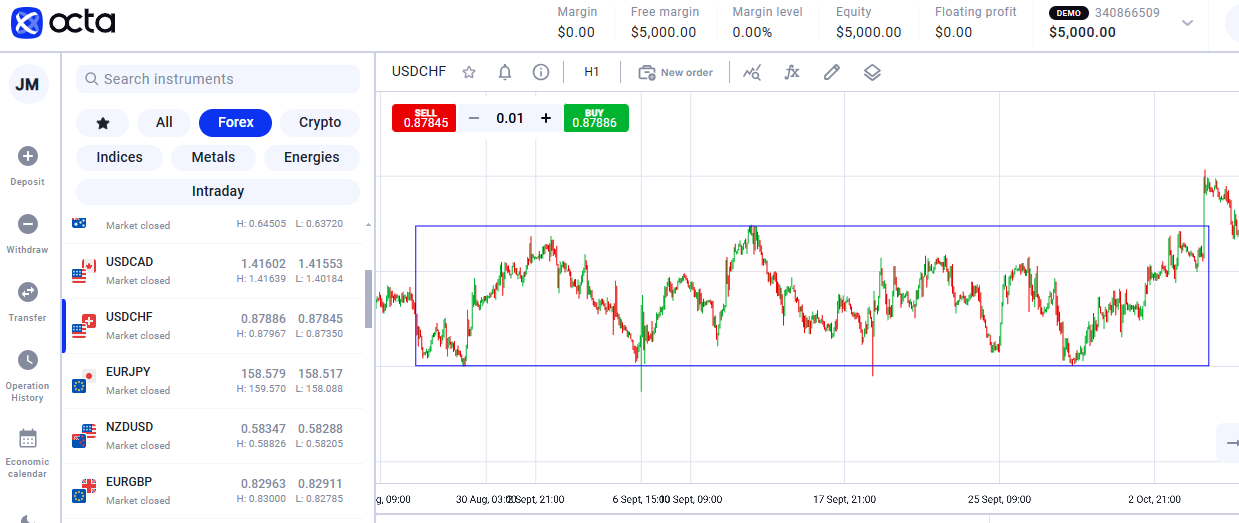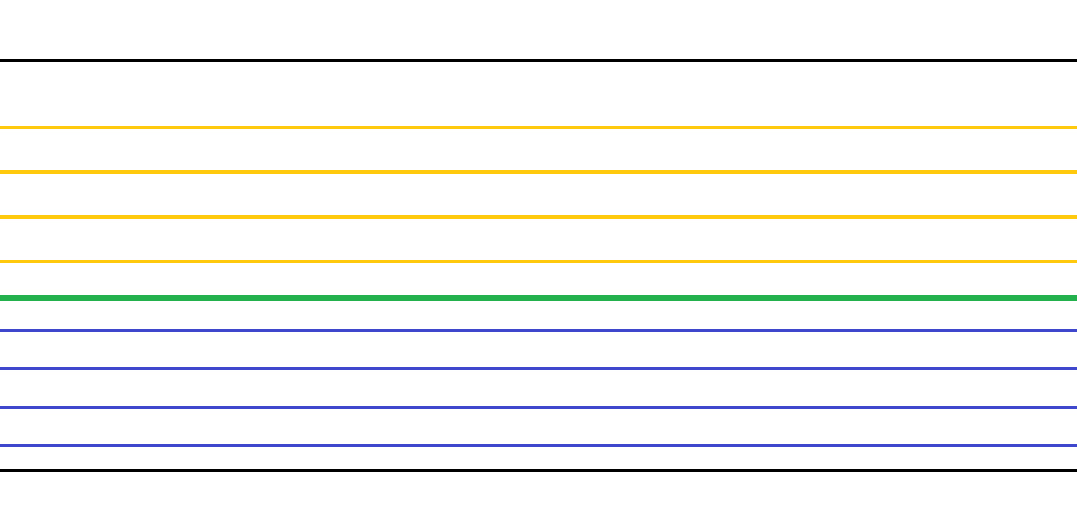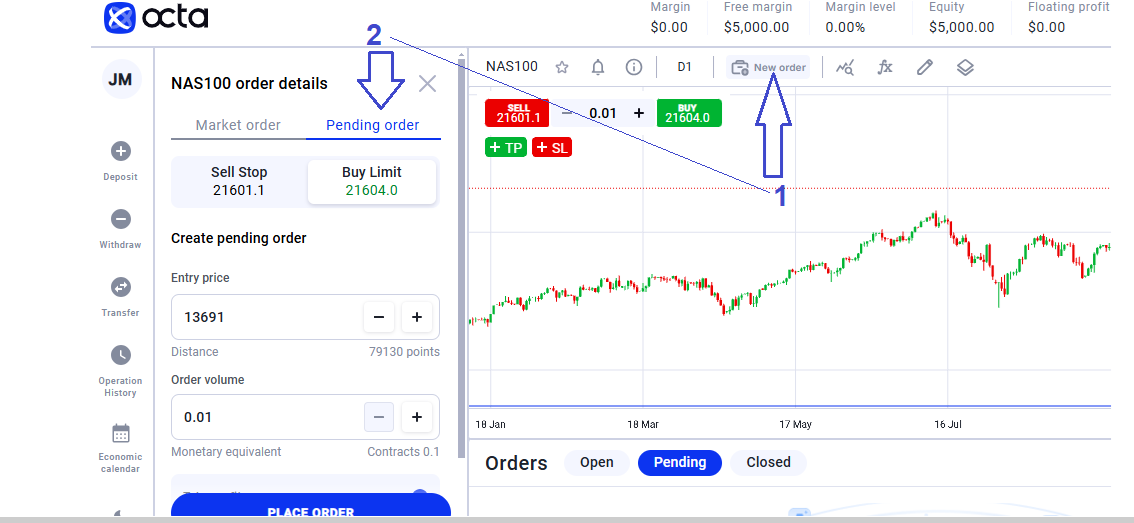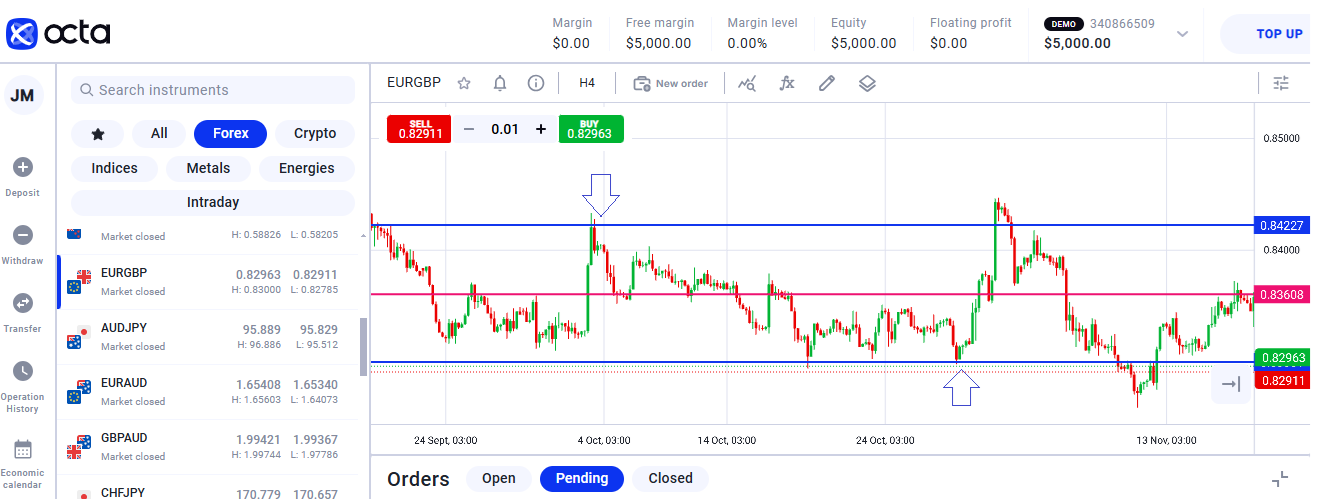What is a grid trading strategy?
Why Forex traders use the grid trading strategy
The grid trading strategy unhedged
Tips for successful grid trading
Grid trading is ideal for experienced traders seeking to take advantage of the regular price volatility in the currencies and CFD market by using limit and stop orders. Learn about grid trading strategy and the importance of pending orders used to advance your Forex trading techniques to an expert level.

There are hundreds of trading strategies used by new and experienced traders. The most common strategy is price action, where traders follow the trend. Other common approaches are scalping, swing trading, and hedging strategies.
The challenge for any new trader is to find a trading method that suits their style. With so much information about strategies online, new traders often need clarification about the best strategy to use. This article will focus on the grid trading strategy, commonly used among more experienced traders.
In financial markets, grid trading is a strategy that involves placing both buy (long) and sell (short) orders at predefined price levels above and below a base price. These orders are arranged in a structured grid, with fixed or strategically spaced intervals. The goal is to capitalise on small price fluctuations by repeatedly buying low and selling high. This strategy is most effective in range-bound markets, where prices oscillate within a predictable range, though it can be adapted for trending conditions. Example of a range-bound market:What is a grid trading strategy?

Steps of grid trading:
- Identify the market's nature—trending or ranging. If the market is ranging, move to step 2.
- Choose the base price—the bold green line is the base price for the grid.
- Identify the highs and the lows—the range. The black lines mark these.
- Put sell-limit orders above the base price—green—and buy-limit orders below the price.
- The limit orders should be placed at equal intervals.

Types of grid trading
There are two types of this strategy:
- Pure trading grid
Its principle is to place buy and sell orders without worrying if the market is going up or down. You set specific prices where you want to buy or sell. As soon as the price hits those points, your orders are executed. It doesn't matter if the market is moving in a particular direction—your orders will still go through.
- Modified trading grid
In this trading style, you still set buy and sell orders, but you only use them when the market is going in a particular direction, like a strong uptrend or downtrend. This way, you can benefit from those trends to make better trades.
There are also different variations of grid trading:
| Symmetrical Grid Trading | When you set your limit, orders are equal to a starting price. So, if the price goes up or down, you can profit. On the other hand, if the price suddenly moves strongly in one direction, you might lose more. |
| Asymmetrical Grid Trading | In this type of trading, you set your order levels at varying intervals based on your market prediction. If you anticipate a significant price increase, you might place your buy orders closer together and your sell orders farther apart. This approach helps position your trades in alignment with the expected market movement. |
| Multi-Grid Trading | This approach involves setting up multiple grids at different price levels, allowing you to capture market movements across various ranges. It helps adapt to price fluctuations and can enhance potential profits. However, managing multiple grids is more complex, requiring careful monitoring and typically a larger capital investment. |
The approach seeks to take advantage of the average price volatility that happens in the currencies and CFD market by using limit and stop orders. The pending buy and sell orders are placed at regular intervals above the market price. To use the strategy properly, it is important to understand pending orders. Pending orders are provided in most Forex trading platforms to enable traders to initiate orders even when they are not present to do so manually. The two common types of pending orders are limit and stop orders. A buy limit order is an order to buy a security at or below a specific price. A sell limit is an order to sell at or above a particular price. On the other hand, a buy stop is an order to buy a security at a price above the current price, while a sell stop is an order to sell a security at a price below the current price. Security refers to currency pairs, commodities, indices, cryptocurrencies, or stocks CFDs. How to place limit orders in Octa:Why Forex traders use the grid trading strategy
Types of pending orders

To place limit orders, go to the New Order tab on desktop—1. In the app, it is located in the lower left corner. Select Pending order and Buy Limit—2.
Why Grid Trading Strategy?
Traders use the grid strategy for several reasons:
- First, it does not require knowledge of the fundamental releases in the market, as is found in the economic data.
- Second, the approach is appropriate when trading in range-bound markets, which are not popular with trend traders.
Example of grid trading
Let's look at an example from the chart. We are going to use EURGBP as an example.
Recall the steps we identified before:
- Identify the nature of the market (trending or ranging). The EURGBP was range-bound, so we proceeded to step #2.
- Choose the base price—the baseline is shown below at the price (0.83608).
- Identify the highs and the lows (the range). The blue lines mark these as prices 0.84227 on the higher side and 0.83001.
- Place sell-limit orders above the base price and buy-limit orders below the price.
- To protect capital in case the trade goes against you, put the Stop Loss above the sell limit and below the buy limit.

The other type of grid trading strategy is unhedged. In this, the trader uses pending orders described above and does not require two opposite trades. The first step is to select the direction of security. You can do this by just looking at the chart and seeing the direction the security is moving. If it is moving up, your strategy will be to buy. Then, it would help if you decided on the unit sizes of the Grid. If the market price of the EURUSD pair is at 1.1200, and your grid size is ten pips, you can place buy limit orders at 1.1210, 1.1220, and 1.1230. At the same time, you will place sell-limit orders at these levels. In this case, if the pair reaches the 1.1210 level, the buy and sell limit orders will be initiated. If it continues to move up to 1.1250, the profit of the buy limit trades will be more than the losses of the sell limit trades. The grid trading strategy is an ideal method for experienced traders, but it could be easier for new traders. To use it well, you should take time to learn more about it and practice using a demo account. Doing this will help you sharpen your skills and identify the ideal way to apply them in your trading.The grid trading strategy unhedged
Some of the benefits of grid trading: Some of the drawbacks of grid trading:Pros and cons of grid trading
Grid trading works best when the market moves up and down within a specific range rather than going in one direction for a long time. Some currency pairs are better for grid trading than others. For example, the EURGBP pair tends to move within a range, making it a good choice. The Yen (JPY) pair can also work, but sometimes it trends in one direction for a while, which can be risky. When trading, it's essential to have a good plan to protect your money, even if your grid trading strategy usually works well. In grid trading, you have a chance to profit more than 60% of the time. However, it is crucial to decide upfront how much money you're ready to potentially lose on each trade and ensure that if you have multiple trades open, the total amount you could lose is, at most, a certain percentage of your total money. For instance, if you say you're prepared to lose $100 on one trade, then with three trades, you are strongly advised to limit your total possible loss to $300, to keep your money safe while trying to make more. You can read more on profitable trading strategies in our article 'Trading strategies. How do you adopt the one to suit your goals in 10 minutes?'.Is grid trading profitable?
Tips for successful grid trading
Final thoughts





